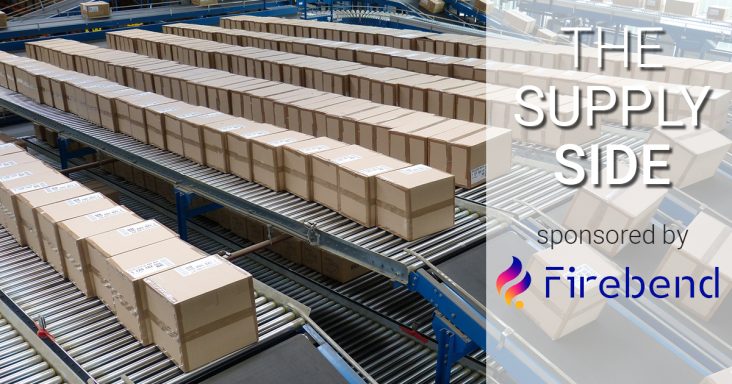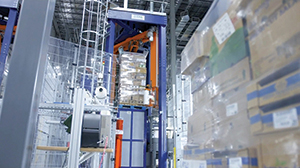The Supply Side: Walmart’s grocery supply chain continues to evolve
by August 4, 2024 4:03 pm 1,102 views

As Walmart’s grocery business grows, the retailer plans to transform the supply chain that feeds the food and consumables business. Groceries accounted for more than $264 billion of Walmart’s U.S. sales last year, up 20.54% over the past two years.
David Guggina, head of supply chain at Walmart, said the evolution of the supply chain dates back 50 years at Walmart when the company first invested in distribution centers. They expanded again when Walmart added grocery sales in 1988. He said as consumers began buying online, the retailer added fulfillment centers, and more recently, the company added market fulfillment centers to increase capacity for online grocery. Supercenters have also become fulfillment centers for online orders closer to the customer, reducing final mile costs of delivery and offering store pickup.
Guggina said as more consumers buy food and consumables online, Walmart is adding technology to its facilities to improve speed and capacity.
“For example, these high-tech distribution centers can store double the number of cases and process more than twice the volume of a traditional perishable facility, more than doubling the number of cases processed per hour,” Guggina said.
He said as cases come in from farmers and suppliers, they are inspected for quality and removed from pallets. The cases are then placed in an automated storage system that’s nearly 80 feet tall and operates in a temperature-controlled environment. When it’s time to build a store order, the system retrieves the cases from storage to begin building store-ready pallets, which are built by the department, making them easier to unload at the store.
 “These intelligently layered pallets — with more fragile items, like eggs or fruit, toward the top — are then wrapped and loaded onto a truck for shipping. We’re excited about what this technology will do for our business, but more than that, we’re excited about the opportunities it will create for associates,” Guggina said.
“These intelligently layered pallets — with more fragile items, like eggs or fruit, toward the top — are then wrapped and loaded onto a truck for shipping. We’re excited about what this technology will do for our business, but more than that, we’re excited about the opportunities it will create for associates,” Guggina said.
Technology and machines can easily handle repetitive and labor-intensive tasks, allowing employees to perform higher-level skills like problem-solving, practicing discernment and creativity up and down the supply chain, he said.
Walmart said it’s building five new high-tech perishable distribution centers. The first high-tech distribution center in Shafer, Calif., has been operational since 2021. A Lancaster, Texas, center is ramping up operations and will be followed by centers in Wellford, S.C.; Belvidere, Ill.; and Pilesgrove, N.J.
Guggina said collectively the facilities will add about 2,000 new jobs to Walmart’s supply chain network.
Walmart is also expanding four traditional perishable distribution centers in Indiana, Minnesota, North Carolina and Tennessee by adding more than 500,000 square feet of automation per site. This will increase the capacity for fresh products. This work will be completed over the next two years.
Guggina said Walmart is also adding new technology to a Winter Haven, Fla., facility that handles perishables. This move follows a similar retrofit completed in an ambient (shelf-stable) distribution center in Brooksville, Fla. The timeline for the supply chain transformation is the end of next year. Walmart said 65% of stores will be served by automation, 55% of fulfillment center volume will move through automated facilities and unit cost averages could improve by approximately 20%.
In a recent podcast with Brent Williams, dean of the Sam M. Walton College of Business at the University of Arkansas, Guggina said the supply chain is critical to Walmart’s success and ability to serve customers. He said technological advancements are essential to improve and modernize the supply chain over the next few years.
“In the supply chain, we want to know what we own, where it is, how much is there and in what condition. We need that information in near real-time. Folks have reached for that for a long time, and it’s just unbelievable to see the capabilities we have today to help us achieve that vision to increase speed. But also, think about being time-definite in a supply chain and all that you can do to optimize if you know what we own, where it is, how much there is all in near real-time today and knowing exactly when it will reach the next stop. Having this knowledge also allows you to extract waste out of the system,” Guggina said.
Walmart is also working with partners of various sizes to help with this transformation. The partnership with Symbotic has been well-publicized. Walmart and Wilmington, Mass.-based Symbotic announced in May 2022 an agreement to place Symbotic’s robotics and software automation system in Walmart’s 42 regional distribution centers.
“Using high-speed robotics and intelligent software to organize and optimize inventory, the Symbotic System helps us get products to our customers quickly and seamlessly by revolutionizing how we receive and distribute products to stores,” Guggina said in May 2022.
He said Walmart also works with Plug and Play in Bentonville to help match startups and supply chain technology offerings from startups with the retail giant.
“We are also builders at Walmart, but we don’t think we have all the best answers and find working with smaller companies advantageous because we can work together to craft the right solution for our needs and then scale it more quickly,” he said.
Guggina said Walmart U.S. CEO John Furner noted that retail loyalty exists only in the absence of something better and customer demands are constantly changing.
Editor’s note: The Supply Side section of Talk Business & Politics focuses on the companies, organizations, issues and individuals engaged in providing products and services to retailers. The Supply Side is managed by Talk Business & Politics and sponsored by Firebend.
